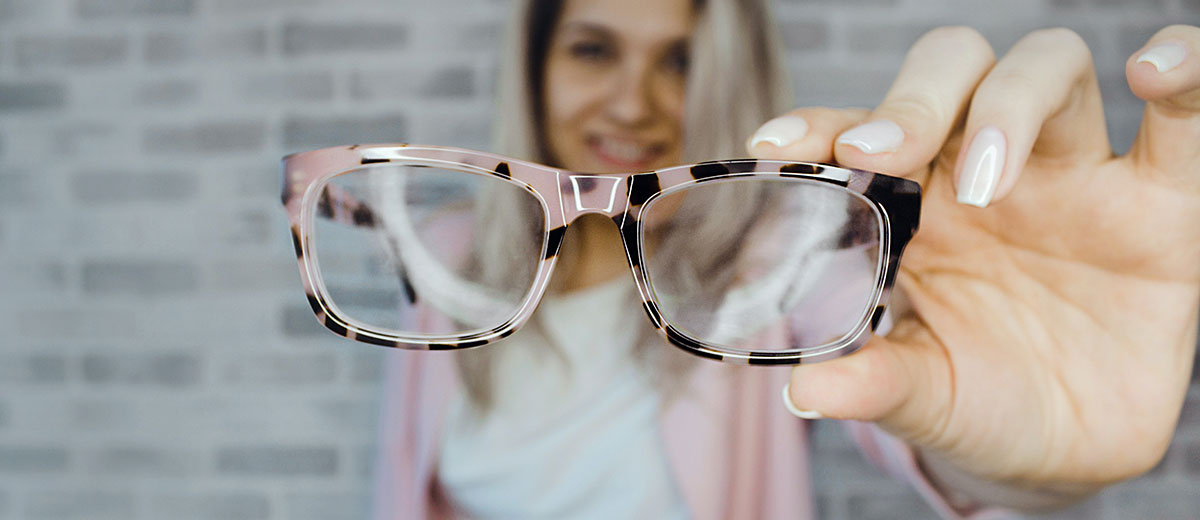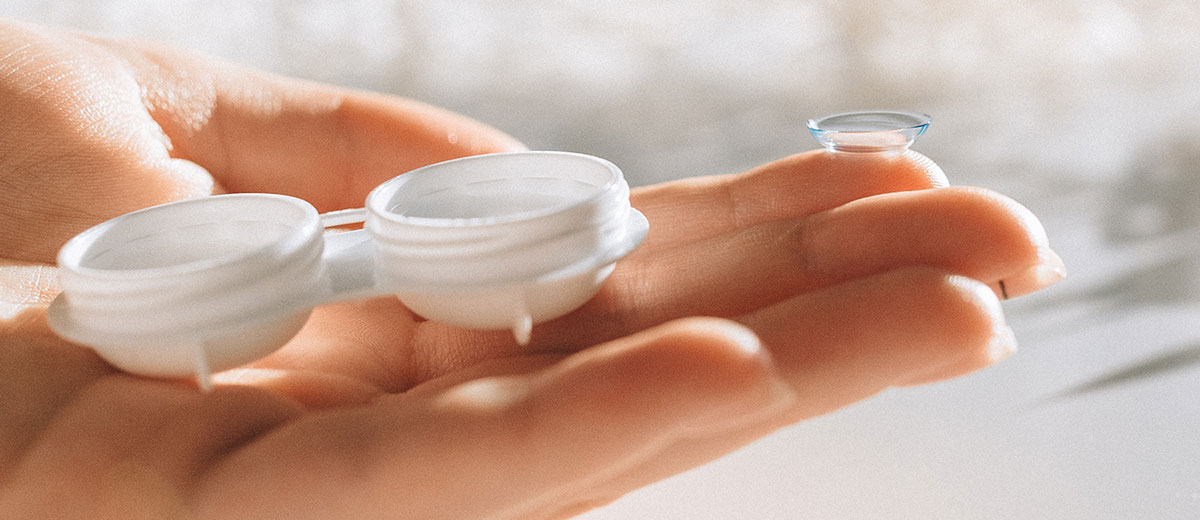Glasses & Contacts
Eyeglass Prescriptions
If you have a refractive error, you may be given an eyeglass prescription at the end of your eye exam. This prescription includes the value of the parameters for dispensing corrective eyewear. These parameters are determined by a procedure known as a refraction. The prescription itself is written in a standardized format. Many vision plans include the refraction as a covered procedure while most medical plans, including medicare, do not. Consequently, you may be required to pay a fee for this service.
What are Eyeglass Prescriptions?
To most patients, eyeglass prescriptions may as well be written in Greek. They contain a number of different abbreviations, numbers, and terms that can be difficult to understand. Eyeglass prescriptions include measurements that detail the power to which each eyeglass lens needs to be made to correct visual errors like nearsightedness, farsightedness, and astigmatism.

Contact Lenses
Every year, more and more people make the transition from prescription eyeglasses to contact lenses. Contact lens technology has advanced significantly in the last few decades, and there is a lens design that can fit the needs of virtually everyone. Making the switch from eyeglasses to contact lenses requires a comprehensive eye exam as well as a contact lens exam and fitting.

What is a Contact Lens Exam?
Contact lens exams are different from regular eye exams. A comprehensive eye examination will include visual acuity testing with an eye chart, as well as eye health tests and a refractive error test. If you are making the switch to contact lenses, your doctor will complete the standard eye and vision testing then begin to gather additional information about your lifestyle and preferences when it comes to contact lenses. A contact lens fitting will follow the exam and discussion.
Reasons for Contact Lens Exams
Contact lenses are not one size fits all. If a contact lens is too steep or too curved, it can cause significant eyestrain, discomfort, and damage. That is why it is important for patients to undergo a comprehensive contact lens exam and fitting. The goal of a contact lens exam and fitting is to determine the best contact lens style and size to fit your eyes.
What are Contact Lenses?
Contact lenses are worn directly on the eye and correct vision like eyeglasses. They are used to treat myopia (nearsightedness), hyperopia (farsightedness), astigmatism (blurred vision due to cornea shape) and presbyopia (inability to see close up).
There are many types of contacts. Visit with the professionals at Eye Physicians and Surgeons to find which is the best choice for your individual needs.
- Soft lenses are the most popular. They are comfortable and come in many varieties.
- Daily-wear are removed every night and are replaced based on the needs of the individual. They tend to be the least expensive.
- Extended-wear are removed weekly for cleaning and can be worn overnight.
- Disposable-wear are ideal for allergy sufferers and are removed each night and replaced daily, weekly or monthly.
- Colored contacts change your eye color and/or the overall appearance of your eye.
- Toric soft contacts correct astigmatism.
- Bifocal or multifocal contacts can correct nearsightedness, farsightedness and astigmatism in combination with presbyopia. These lenses offer an opportunity to reduce your dependence on glasses.
- Gas permeable lenses provide excellent optical clarity and can be fit for patients with nearsightedness, farsightedness, astigmatism, presbyopia and other conditions of the eye, such as keratoconus and irregular astigmatism.
Cleaning and disinfection are specific to the lens material. The doctors at Eye Physicians and Surgeons provides all the information to make sure your eyes stay clean and healthy while enjoying the freedom and convenience of contact lenses.
